Formaggio La Tur – A Trio of Milks
I love goat cheese, but I also enjoy cow and sheep’s milk cheese and now I can have them all in this Meritage of cheese called La Tur. My friend Jack, who owns the cheese market at our local farmer’s market, suggested this Italian cheese from the Piedmont area.
Looking for something spreadable on a French baguette for breakfast but a little stinky, Jack offered up this buttery, bloomy rind little cupcake of a cheese, and it was everything I was looking for. It has a creamy consistency with a little bit of tang. It would help if you let this cheese warm up to room temperature before consuming or you will lose all the flavor.
In Short
- Type: Equal parts cow, goat, and sheep milk
- Origin: Alta Langa, Piedmont, Italy
- Process: Barely ripened (10 days to two weeks)
- Texture: soft and runny near the rind, almost fluffy/mousse-like towards the center
- Shape: Short cylinder “3” x “1½”
- Weight: 8 ounces
- Color: pale cream to straw-colored
- Rind: Thin and white, wrinkling as it ages. It can have a thin coat of white mold.
- Flavor: well-rounded, mellow, grassy with a hint of mushroom
The Rest of the Story
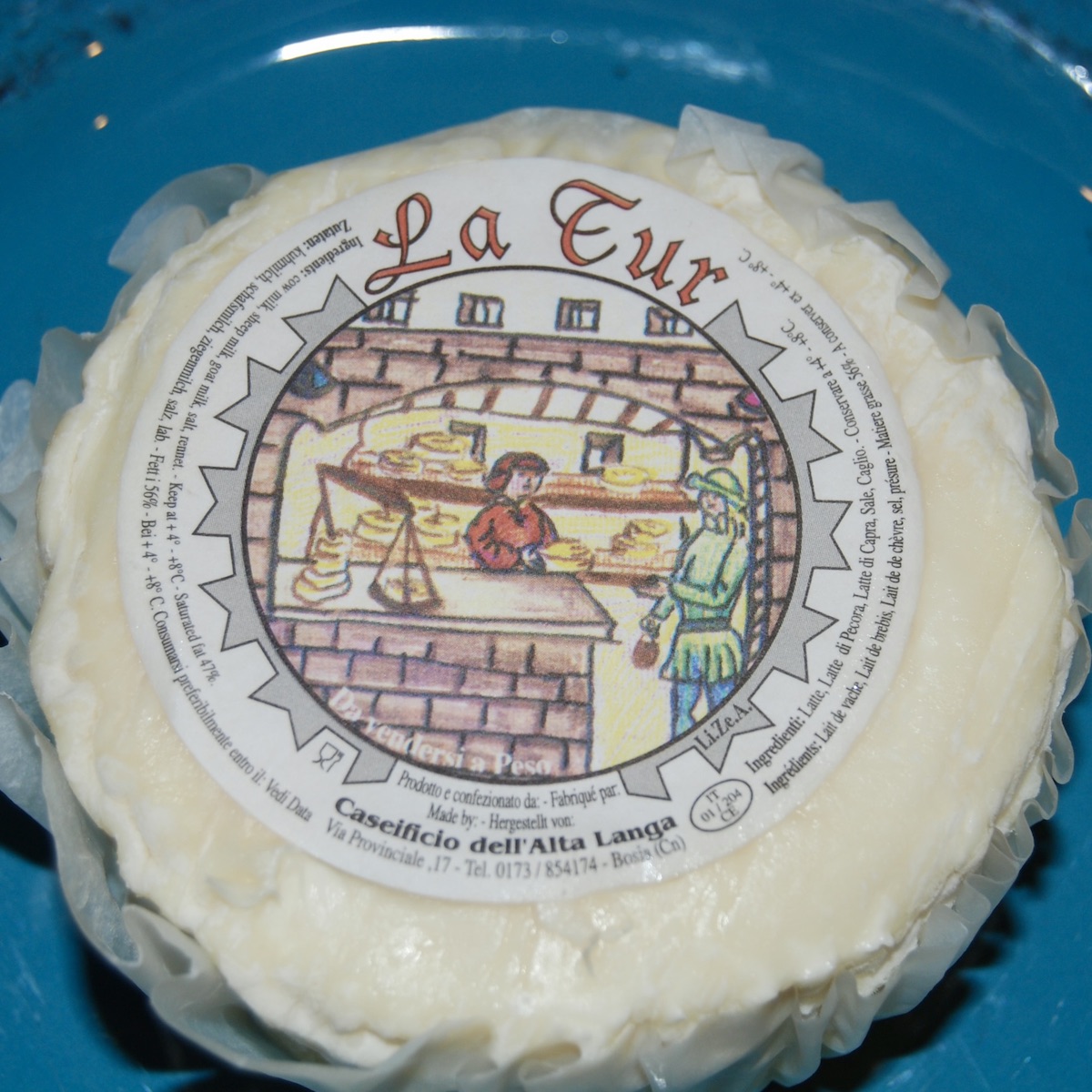
One of the cheese makers’ most important decisions regarding La Tur was to pasteurize the milk at the lowest possible temperature allowed by Italian law. This means that the enzymes present in the milk are not all killed off during the pasteurization process, and it’s the enzymes that contribute to the final flavor profile of the cheese.
While many young, soft kinds of cheese are very mild in flavor, La Tur tends to be pretty complex, definitely something cheese connoisseurs appreciate.
Three Milk Types
The three kinds of milk, cow, goat, and sheep, are mixed in equal parts, and the resulting mixed curds are packed into small molds and then allowed to age for ten days. No one flavor profile dominates.
You can taste the buttery richness of cow milk, the tang of goat milk, and the mellow nuttiness of sheep milk. The three kinds of milk complement each other nicely, which is another reason La Tur has a relatively complex flavor for a young, soft cheese.
Due to the light mold that grows on the rind of the cheese, it ripens from the outside in. In a cheese, ten days old, the cheese is creamy inside the rind and fluffy towards the center. As the cheese ages, the outside layer becomes runnier and more pungent, while the center becomes creamy.
How to Enjoy La Tur Cheese
Eventually, the cheese is runny throughout. To experience the progression for yourself, buy three small, fresh wheels. (They’re cute. They come in pleated doilies that look like cupcake papers). Enjoy one immediately. Save one for two or three weeks later, and then eat the last one a few weeks afterward.
As with most cheese, La Tur is best served at cool room temperature to appreciate the flavor. You can certainly serve it with a nice un-oaked red from the Piedmont region of Italy. However, the tang of the cheese is nicely set off by sweeter dessert wines.
Spread the cheese on some crusty bread. Or, if you want to gild the lily, serve it with some clover honey, roasted pears, or quince jam.

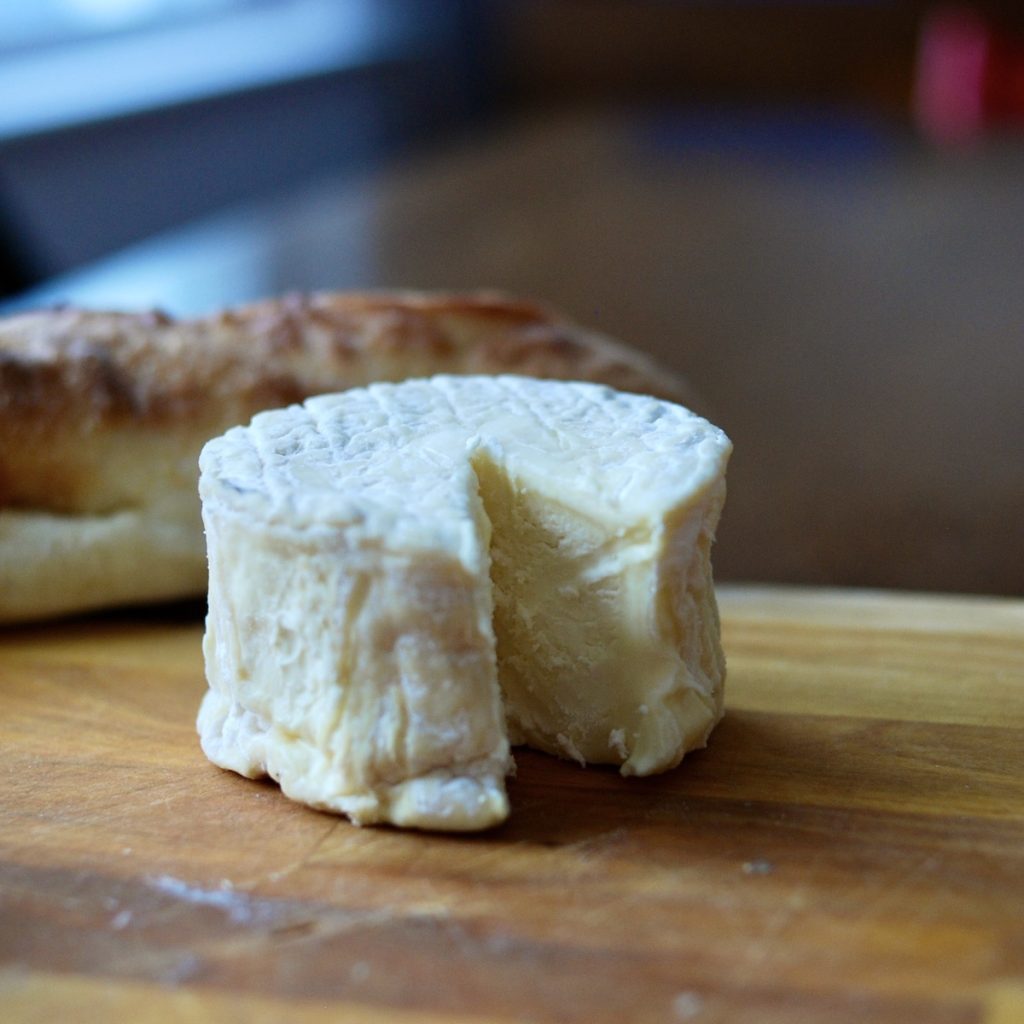
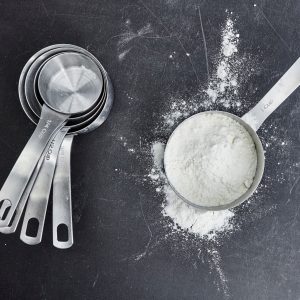


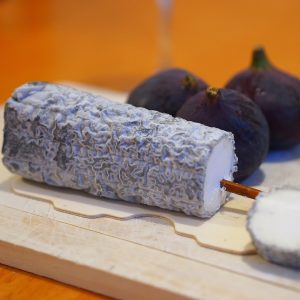


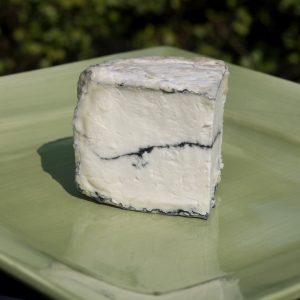
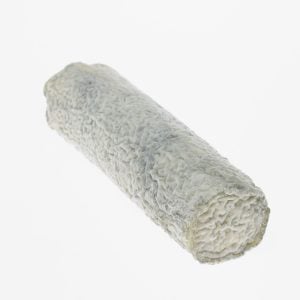



28 Responses
This is such a delicious cheese, creamy and runny and slightly salty. Usually carried at Whole Foods if not at a local cheese shop. Makes me happier than 3 milk robbiolas.
I tasted this cheese while looking for something similar to brie. All I can say is that it is absolute paradise!
Cheese is my world! I actually have dreams about cheese and when I wake up, sometimes sprinkle cheese on my cereal. I live for cheese. Great site by the way.
Cheese on cereal, now that’s something I haven’t tried yet – RG
Does anyone have a recipe for making La Tur? Or even hints . What Kind of mold ? Ratio of the three milks ?
Homemade La Tur-Style Cheese Recipe
(Note: This is an approximation, as the original recipe is not publicly available.)
Ingredients:
1 gallon (3.8 L) raw or pasteurized cow’s milk
1 quart (0.95 L) raw or pasteurized goat’s milk
1 quart (0.95 L) raw or pasteurized sheep’s milk
1/8 tsp mesophilic starter culture (MA4001 or MA4002)
1/16 tsp Penicillium candidum (white mold)
1/16 tsp Geotrichum candidum (optional, for a wrinklier rind)
1/4 tsp liquid calcium chloride (only if using pasteurized milk)
1/8 tsp liquid rennet (single-strength) diluted in 2 tbsp non-chlorinated water
1 tsp non-iodized salt
Instructions:
Heat the Milk
Slowly heat the mixed milks to 86°F (30°C). Stir gently to ensure even temperature.
Add Cultures & Mold Spores
Sprinkle mesophilic starter, Penicillium candidum, and Geotrichum candidum over the milk. Let them rehydrate for 1-2 minutes, then stir thoroughly.
Add Calcium Chloride & Rennet
If using pasteurized milk, add diluted calcium chloride and mix gently.
Add the diluted rennet and stir in an up-and-down motion for 30 seconds. Cover and let the milk sit undisturbed for 60-90 minutes, or until it forms a firm gel-like curd.
Cut & Drain the Curd
Cut the curd into 1-inch cubes and let it rest for 5 minutes.
Gently stir and allow the curds to settle, releasing whey. Let them sit for another 5-10 minutes.
Molding & Draining
Ladle the curds into small cylindrical molds (cheese hoops) lined with butter muslin. Fill each mold evenly, allowing whey to drain naturally.
Let the cheese drain at room temperature (68-72°F / 20-22°C) for 12-18 hours, flipping occasionally to ensure even drainage.
Salting & Aging
Unmold the cheese and lightly sprinkle salt on all surfaces. Let the cheese absorb the salt for a few hours.
Transfer to a cheese cave or aging fridge at 50-54°F (10-12°C) with 85-90% humidity.
Allow to ripen for 10-14 days, flipping every other day to encourage even mold growth. The rind should develop a thin, white bloomy layer.
Enjoy!
Once matured, La Tur-style cheese should have a delicate, wrinkly rind and a rich, gooey texture. Serve at room temperature with honey, nuts, and fresh bread.
The article says it is equal parts of each.
Very tasty cheese!
Where would you buy this cheese ?
Hi Cheryl, you are not going to find this cheese in your local supermarket but if you have a good cheese market near you, they might have it or they can order it if they don’t. If you want to purchase it online, I’m an affiliate of Gourmet Food Store and they have La Tur here.
Keep in mind, this cheese is a seasonal product and not offered year round. You will find it at most Whole Foods, and at some better stocked Kroger, Randall’s, and HEB stores. Serve at room temperature, take out of the fridge 30 minutes to an hour before you enjoy it…..the flavors come through much better.
Got my first LaTur at the Kroger Marketplace in Englewood, OH.
Hi Jane, what did you think of it? – RG
[…] Just from the picture alone, you can see the two honeys are very different in color. Chantal’s honey is also much thicker than ours most likely due to the arid climate in New Mexico. We feel her honey has a more fruity and floral taste, and we even get a hint of pineapple in the finish. It paired very nicely with a La Tur from Alta Langa, Italy. […]
La Tur is the best cheese I have ever had. Ever! I pasted the packaging sticker on the wall of my last apartment in homage to this great fromage!
P.S. – You must wait for it to warm up completely, until it’s totally oozy and gooey. Though the wait is torture! Hope you enjoy it as much as I did!
I had to go to Whole Foods in Evanston (Il) to find the cheese La Tur. I will serve it with an aragula and beet salad for Mother’s Day Lunch…
We will be tasting the La Tur tomorrow at The Virginia WIne Experience in Fredericksburg. This blog is great. In no way could this cheese have been profiled more exactly.
We have just tried this delicious cheese, for the first time. I bought it in my local Waitrose. It has a nice texture and a very creamy taste
Our local grocery store in Amarillo just stocked this cheese. I first had it years ago in Austin and have been looking for it since. Jackpot!
Anyone know if the rind is edible? I can’t tell which cheeses have edible rinds or not. The last rind I ate tasted as if I was chewing on gooey ammonia.
Hi Bailey, the website Formaggi d’Eccellenza says that the rind is edible
Had this cheese for the first time last night. A friend purchased it at an HEB here in Austin, Tx.
Wonderful!
Found your blog as I was looking for more info about the cheese. Excellent entry. Looking forward to checking out some of your other entries.
Happy New Year!
This is creamy, delicious and adventurous cheese.
Exquisite! I can eat the whole thing by myself. Indeed, if I think I’m going to have to share, I”ll get two!
OMG! La Tur!
YES ! OMG – la Tur!
Here I am: a European lady, learning about La Tur´s origin on an American website…Thank you, internet community! – Italians beat the French this time with this EXTRAORDINARY soft cheese – however, when it comes to HARD cheese – the Frenche and Swiss are leading the world due to the excellent herbs on the high alpine mountains and old cheese-making traditions…
Brought La Tur at Murrays in my Fred Meyer grocery store in Portland, Or. This is by far the most exquisite cheese. I pared it w/ stoneground wheat thins (crackers) w/ fresh cherrys. What an absolute treat. Also smeared it on some Moroccan Olive bread. I’m sure it’s better in a crusty bread. I bought one & am eating it all by myself within a couple of days. Next time I’ll buy one to share. I’ve always been a fan of Brie cheeses, La Tur my new favorite.
If you live in the state of NJ you can find La tur at your local
Kings Supermarkets
got my first la tur today and waiting for it to warm up. I know nothing about it. I took a chance because it had a smell to it even in the package, and I like limburger. glad I looked it up because you all rave about it. can’t wait. I make my own little round bread well cooked in a skillet, using teff flour-buckwheat flour -coconut flour-baking powder-baking soda- and a gob of Kirkland no salt seasoning.
Let us know how you enjoy it Rob.
I had my La Tur in the fridge for a month. Isn’t that enough time for it to get runny. It was just fluffy and tasted pretty bland.
I’ve had La Tur in a restaurant. Luv it but where can I get it?
I’m sure if you have a quality cheese shop near you, it will be available or they can order it for you.